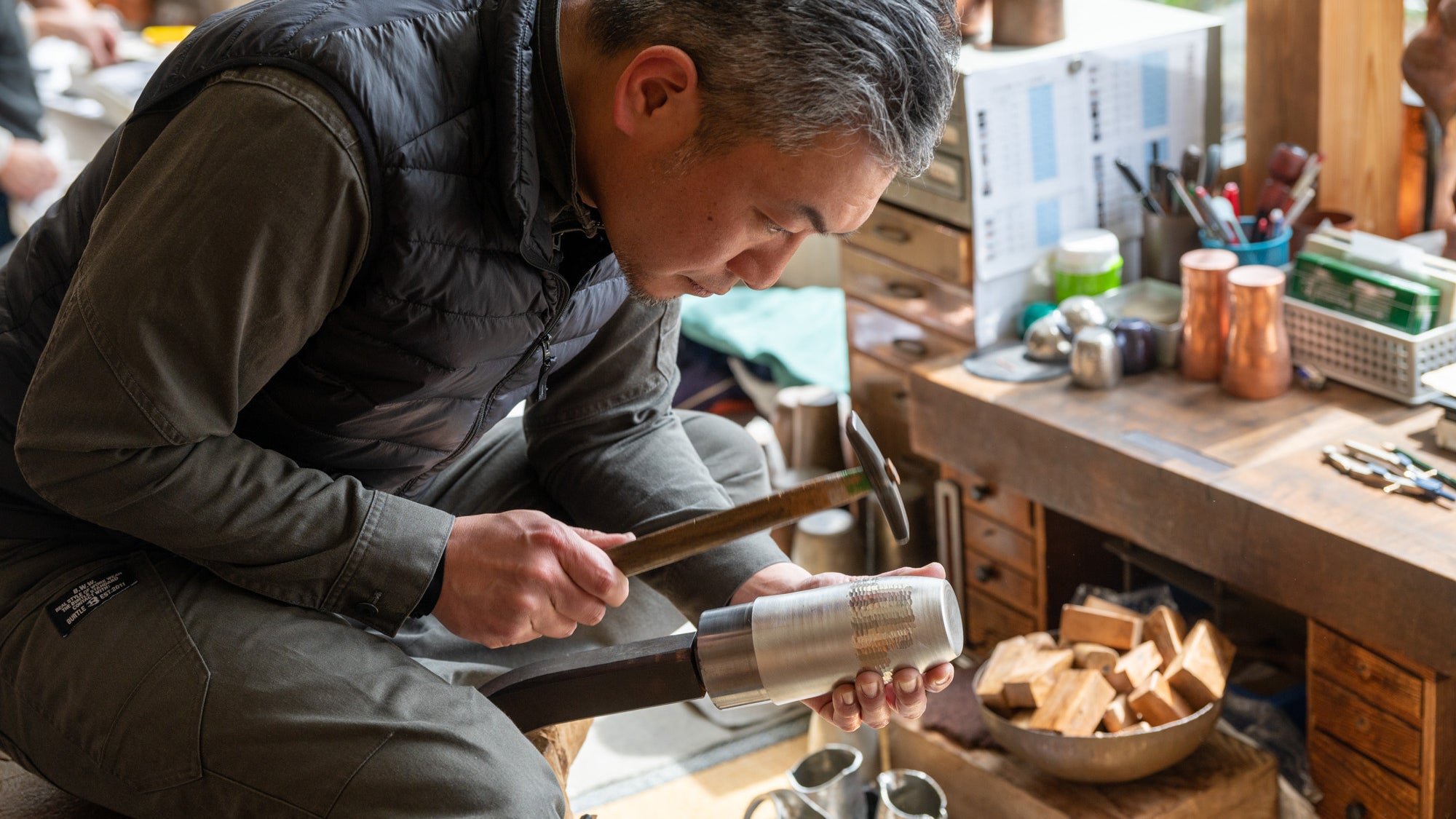
Nishikata Ryota: The Passion and Challenges of Tsuiki
Written by Team MUSUBI
Nishikata Ryota has been a craftsman of tsuiki for 22 years and works with his father, Nishikata Masashi, and his younger brother, Hiroshi.
Tsuiki is a metal crafting technique that involves hammering and embossing metal plates, such as gold, silver, copper, and tin. This complex method entails numerous stages and intricate craftsmanship, demanding considerable expertise.
Situated at the base of Mt. Yahiko in Niigata Prefecture, Seigado is in a region where high-quality copper was found around 300 years ago, and where the art of tsuiki has been cultivated since.When Team Musubi visited Seigado’s workshop, Ryota shared his passion for craftsmanship and his challenges in developing techniques and creating products.
Table of Contents
Into the World of Tsuiki


Tradition: Not Just to Preserve, but to Challenge
At Seigado’s workshop, the colors of metal crafts are meticulously named to emphasize their subtle differences in hue and tone. For example, pure red is called benishoku, and red mixed with blue or brown is called akaneiro, madder red. The red color is achieved by heating copper just short of the point where it burns through. All red tsuiki products intended for drinking purposes, such as cups, have an interior tin coating. This is crucial to prevent the unique metallic smell of copper and the development of verdigris over time.

There has always been a demand from customers asking, "Could you make a red cup for me?," and Ryota had been puzzled about how to create them. After numerous trials with a plating specialist, he finally succeeded. Ever since, Seigado's red tsuiki cups have garnered attention due to their rarity.

Crafting Excellence: The Relentless Pursuit of Perfection

What has remained constant since he began his craft is his ambition to create a diverse array of items. Using copper and traditional hammered copperware tools, he aims to develop a wide range of items: household items, artistic pieces, products employing ancient techniques, and items integrating new methods. "I want to refine my current skills and design better things than I'm making now. I have a strong desire to enhance both my abilities and the quality of the items I deliver.”
Since his younger brother joined the workshop, Ryota has gradually been passing on his tasks to his brother. He says "I want my brother to do things that only he can do. We look forward to tackling new challenges, unexplored by our grandfather and father." Ryota hopes that in the near future, the three family members will each develop their own unique styles.
In the process of crafting, listening to the voices of users is incredibly important. Oftentimes, new methods and products are born from the needs of customers. Ryota continues to refine both traditional and new techniques to produce items that cater to specific occasions and preferences of his customers. There is no end to the work of a craftsman.







Leave a comment
This site is protected by hCaptcha and the hCaptcha Privacy Policy and Terms of Service apply.